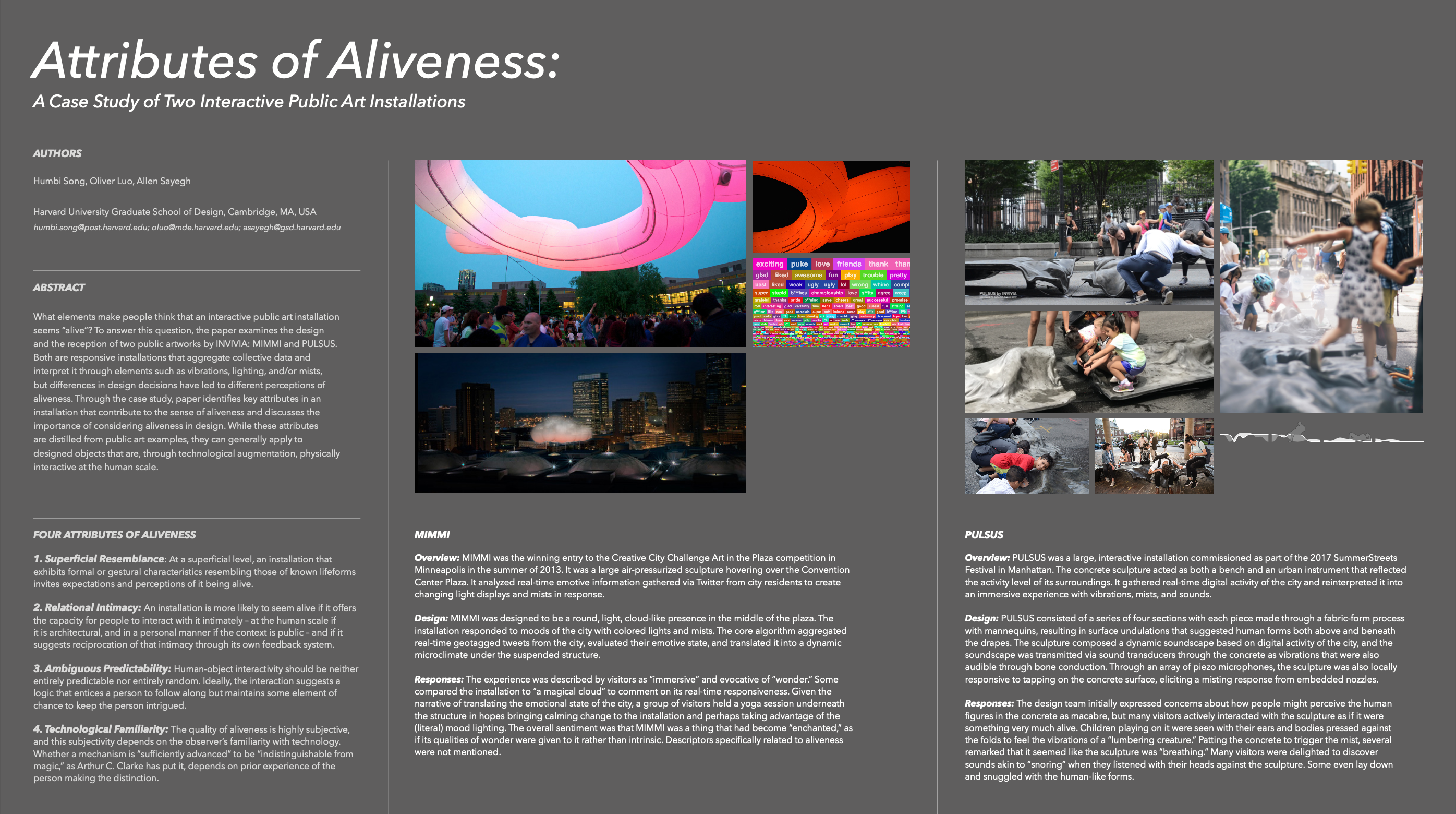Attributes of Aliveness — A Case Study of Two Interactive Public Art Installations
Conference: Beyond Intelligence: the 11th Conference on Design and Semantics of Form and Movement (DeSForM), MIT, 2019
Authors: Humbi Song, Oliver Luo, Allen Sayegh
Keywords: Aliveness, perception, human-technology interaction, technological augmentation, public art installation.
Abstract:
What elements make people think that an interactive public art installation seems “alive”? To answer this question, the paper examines the design and the reception of two public artworks by the INVIVIA studio: MIMMI and PULSUS. Both are responsive installations that aggregate collective data and interpret it through elements such as vibrations, lighting, and/ or mists, but differences in design decisions have led to different perceptions of their aliveness. Through the case study, this paper identifies key attributes in an installation that contribute to the sense of aliveness and discusses the importance of considering aliveness in design. While these attributes are distilled from public art examples, they can generally apply to designed objects that are, through technological augmentation, physically interactive at the human scale.



Citation:
Song, H., Luo, O., Sayegh, A. “Attributes of Aliveness: A Case Study of Two Interactive Public Art Installations”. Design and Semantics of Form and Movement (DeSForM), Conference Proceedings, MIT Design Lab, Boston, 2019, https://desform19.org/DeSForM_2019_Proceedings.pdf. p.254-257.